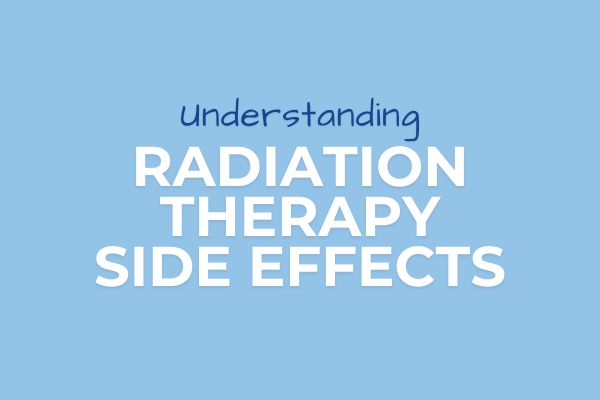Understanding the Side Effects of Radiation Therapy
By Berfin Mahmut, PT, DPT, CLT-LANA, OnCS
Radiation therapy is one of the most common and effective treatments for cancer in the United States. Many patients benefit from its ability to precisely target and destroy cancerous cells locally. However, in the process of eliminating cancer, radiation can also impact nearby healthy tissues, leading to side effects some of which may not appear until months after treatment has ended.
Thanks to modern advances in radiation delivery, clinicians are now better able to target cancer cells while minimizing damage to healthy tissues as much as possible. Despite these improvements, side effects also referred to as radiation toxicities, are still a frequent part of the treatment journey. These toxicities refer to changes or complications in normal tissues that result from radiation exposure. They may be temporary or permanent, and they fall into two broad categories which are acute and late effects.
Acute side effects usually appear during or within three months of starting radiation. These effects are often caused by inflammation or damage to fast-dividing cells, such as those found in the skin, connective tissues, and mucous membranes.
Common acute side effects include:
- Redness, warmth, and mild swelling in the treated area
- Skin irritation resembling a sunburn
- Blistering or peeling especially in skin folds, in more severe cases.
- Inflammation of the mucosal lining, which can affect eating, swallowing, and speaking
Proper skin care is crucial during this phase. Gentle cleansing and avoiding irritants are general recommendations. Topical treatments such as steroid creams or silver sulfadiazine can also be recommended by the radiation team in some cases to help manage symptoms and promote healing.
Late side effects can develop months or even years after radiation treatment ends. Unlike acute side effects, late effects tend to involve slow-developing tissues and are more likely to be long-lasting or permanent. These changes often stem from fibrosis (scarring and hardening of tissue), vascular damage, or compromised lymphatic flow.
Examples of late effects include:
- Fibrosis, leads to stiffness, tightness, and restricted movement in the radiated area.
- Skin darkening and thickening in the treated area.
- Lymphedema, or persistent swelling due to fluid buildup when the lymphatic system is affected.
Depending on the area treated, late effects can also impact deeper systems and vital functions:
- Head and neck radiation may affect jaw mobility, swallowing, and speech.
- Pelvic or genitourinary radiation can influence bowel and bladder function, as well as sexual health.
- Chest wall radiation may impact the heart and lungs, potentially affecting cardiovascular or respiratory function.
Although the idea of late side effects can be daunting, survivors are not alone and support is available. One of the most empowering steps a survivor can take is to work with rehabilitation professionals such as physical therapists, occupational therapists, and speech-language pathologists specializing in oncology. These experts are trained to address the physical and functional challenges that may arise after radiation therapy.
- Physical therapy can help restore strength, mobility, and function. Therapists use techniques to soften hardened tissue, reduce tightness, improve lymphatic drainage, increase strength, and manage pain.
- Occupational therapy focuses on helping survivors adapt to daily activities and regain independence, especially when physical limitations are present.
- Speech-language pathology is essential for individuals experiencing difficulty with speech or swallowing. A speech therapist can evaluate and create personalized treatment plans to improve these functions, enhancing quality of life and preventing complications.
If you are experiencing any of these late effects or if you’re unsure what is expected after radiation, please don’t wait to reach out to your team or a rehabilitation specialist. The sooner you seek support, the more effective the interventions can be.
Empowerment Through Awareness
Understanding potential late effects of radiation therapy isn’t meant to cause worry, it’s meant to empower you. With awareness comes the ability to take control of your health, seek the right care, and continue thriving beyond cancer. Your recovery doesn’t end when treatment stops. In many ways, it’s just the beginning of a new chapter and there are resources and professionals ready to walk alongside you every step of the way.

Berfin Mahmut is a Doctor of Physical Therapy, a certified lymphedema therapist, and a cancer exercise specialist who specializes in cancer rehabilitation at Mount Sinai in New York, NY.


